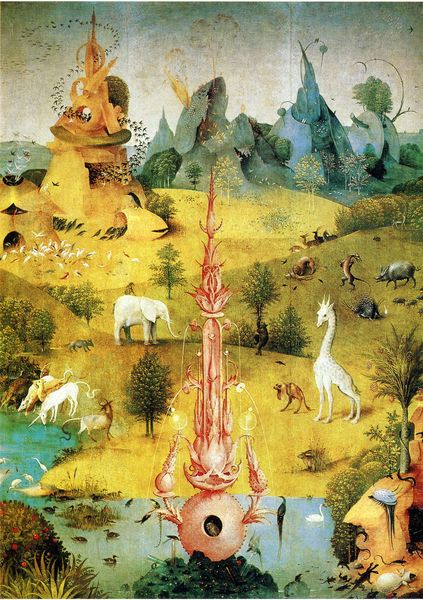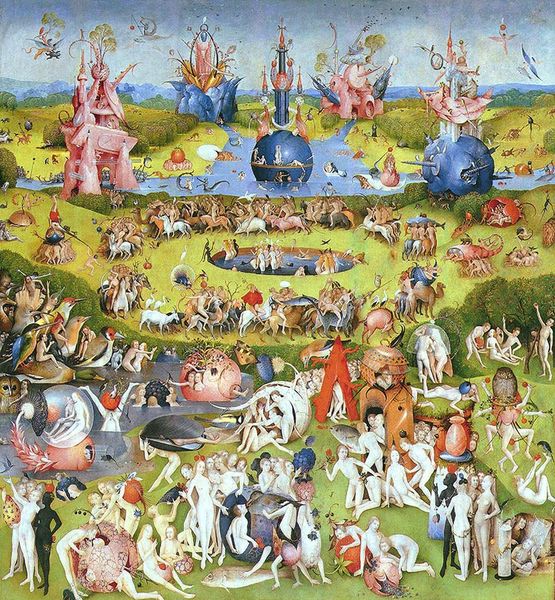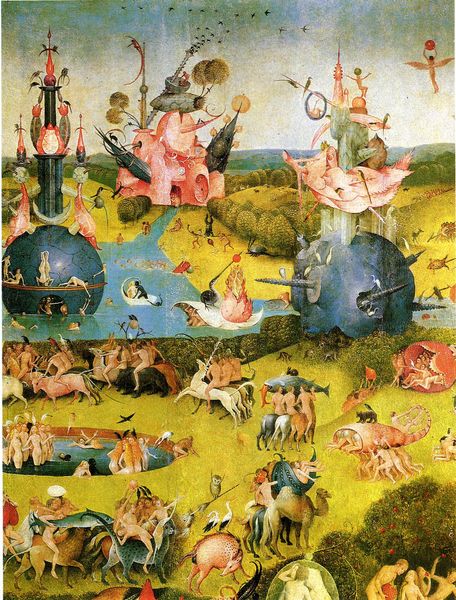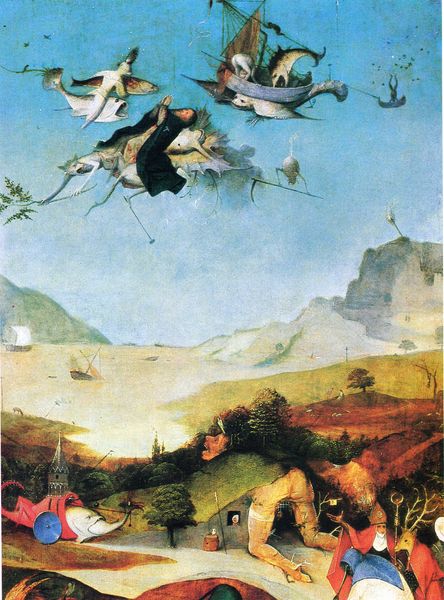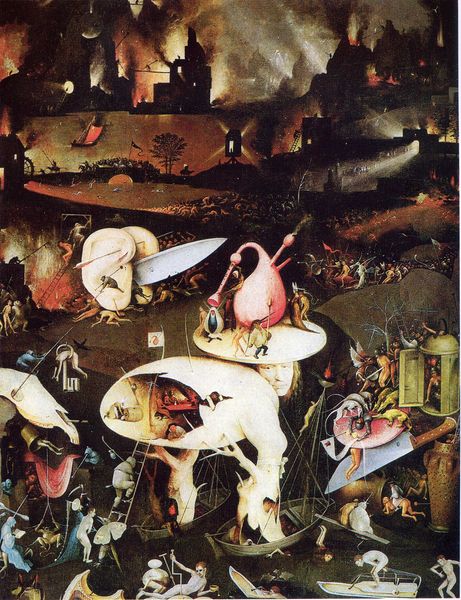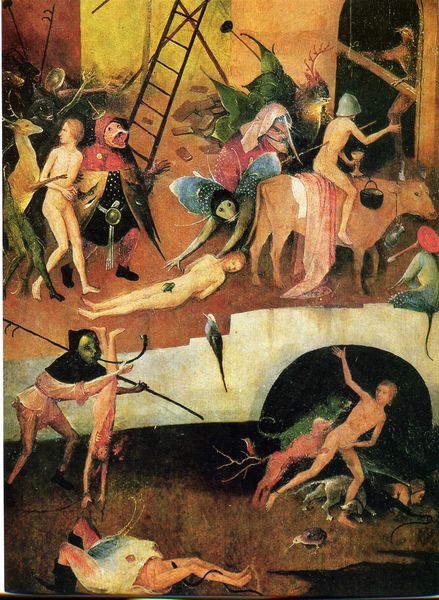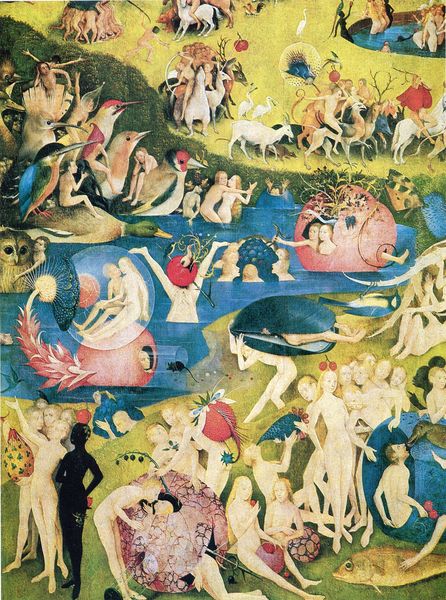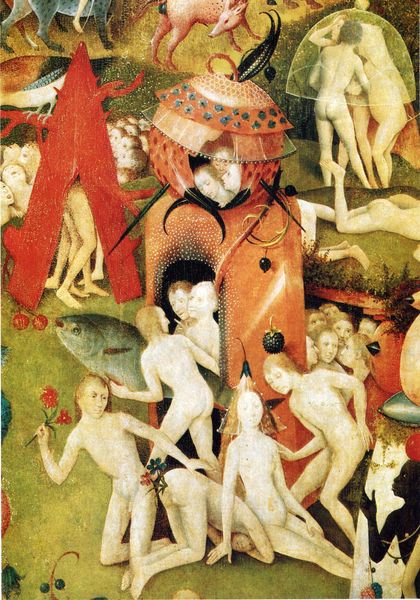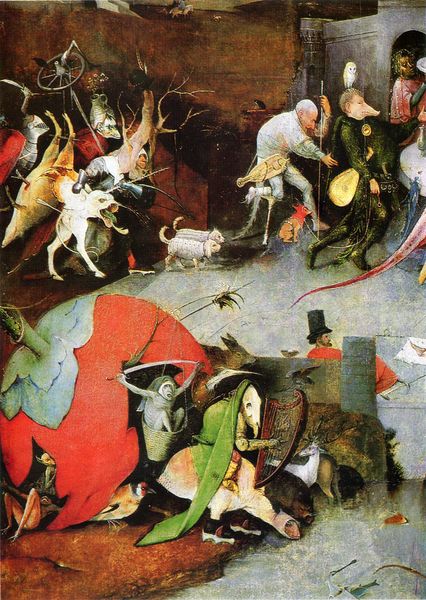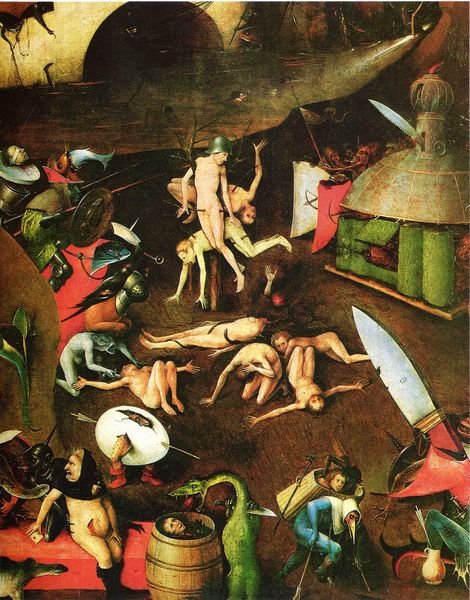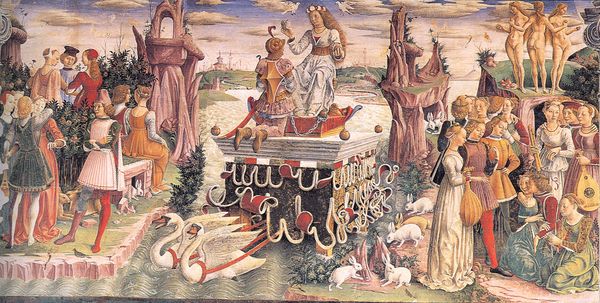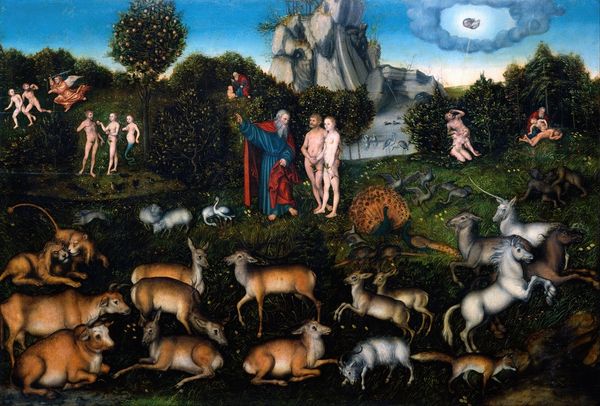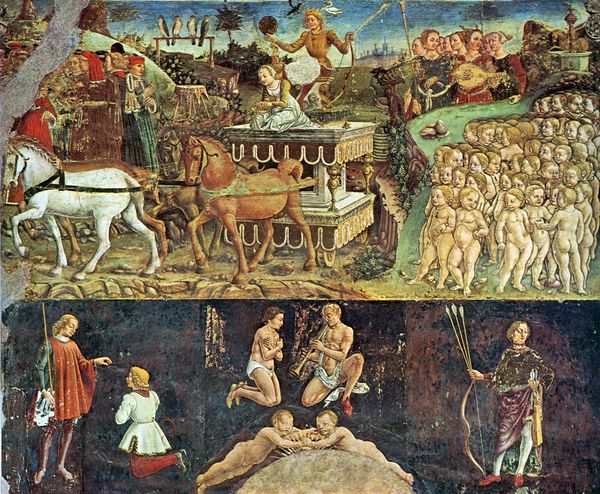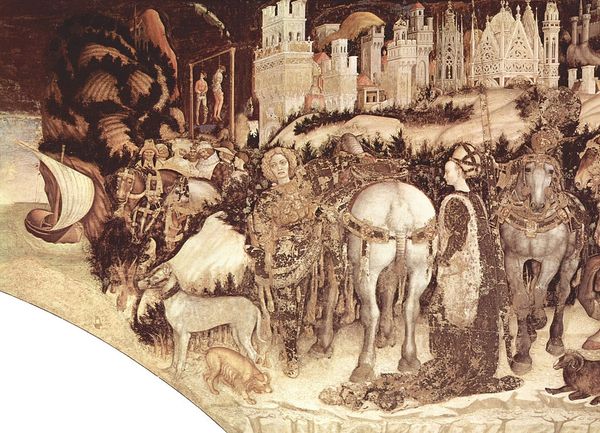
Copyright: Public domain
This section comes from Hieronymus Bosch’s painting, made in the Netherlands around 1500, called “The Garden of Earthly Delights.” The painting is a vision of paradise, but it’s also a satire of human folly. Bosch was working in a time of immense religious and social change, so his imagery creates meaning through visual codes and historical associations. Here, we see fantastical creatures and naked figures cavorting in a landscape filled with oversized fruits and strange architectural structures. The scene evokes a sense of innocence and pleasure, but there’s also an undercurrent of unease. Is this a celebration of earthly delights, or a warning about the dangers of indulgence? Bosch’s work reflects the anxieties and contradictions of his time. To fully appreciate it, we need to consider the social and institutional context in which it was made, researching the religious beliefs, artistic conventions, and cultural norms of the period.
Comments
No comments
Be the first to comment and join the conversation on the ultimate creative platform.
